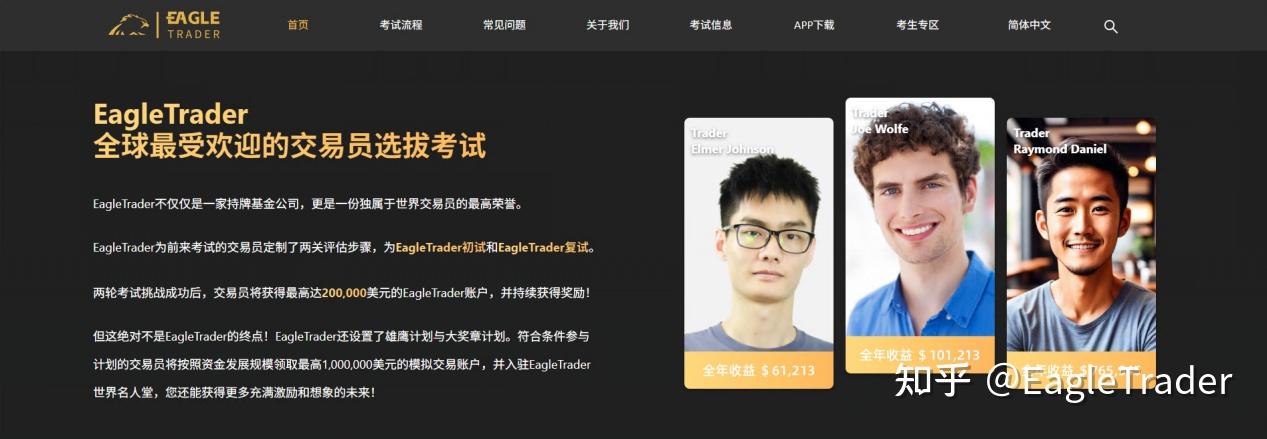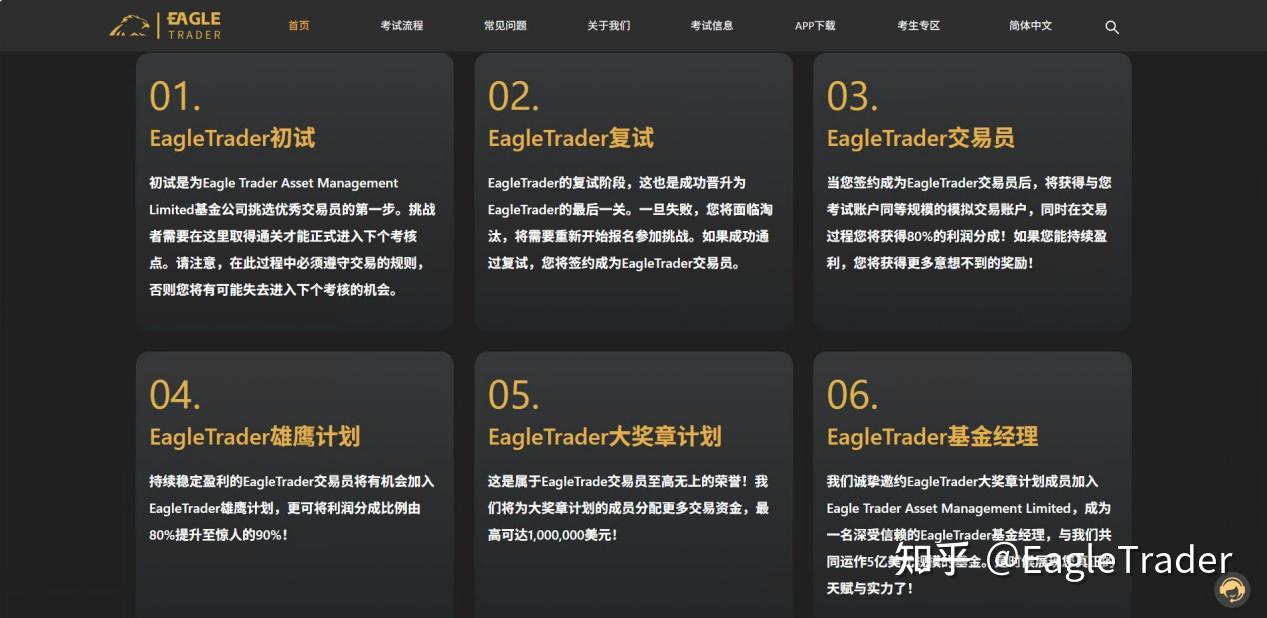Why should simulated transactions be divided into profits? Understand the funding logic behind the self-operated trading exam
- 2025年7月3日
- Posted by: Eagletrader
- Category: News
In the trading world, “simulated trading” has long been regarded as a learning tool, but it is difficult to have a direct connection with the word “making money”. In recent years, a new self-operated trading examination mechanism is breaking this common sense: candidates use demo accounts to trade, but after passing the assessment, they can obtain real financial support and even enjoy up to 90% of the profit share.

Many people’s first reaction is: How did this money come from? The platform pays it out of its own pocket? I am not afraid of losing money? If I ignore the logic behind it, I will indeed feel like a scam. But in fact, this test model is very mature and rigorous.
The exam is not about profitability, but about profitability
Take the EagleTrader platform as an example, the purpose of the self-operated trading exam is not about competing for short-term explosive power from the very beginning. What the platform really wants to see is: Do you have a stable, clear and replicable trading system? Do you have the ability to make continuous profits under controllable risks?

This set of exams uses simulated fund accounts, but there is a complete risk control system monitoring in real time during the execution. For example, the maximum drawdown must not exceed a certain threshold, and a single transaction cannot be overly heavy. There are clear rules for trading frequency and position logic.
In other words, what the platform wants to identify is “people with real-time trading capabilities”, rather than “people who bet on the right time”. Therefore, profit is not the focus, and stable profitability is the underlying logic that the platform is willing to bet.
Where does the dividend bonus come from?
Many people mistakenly think that the platform “issued bonus” after passing the exam, but this is not the case. The trader’s account that passes the exam will be connected to a fund replication system of the platform – your front-end operation is still a demo account, but the back-end will execute synchronously in the real-time account according to every operation you make.
In other words, the platform handes the funds to you, but the risks are borne by the platform. If you make money, the platform will give you a portion of the profit (up to 90%); if you lose money, it will be borne by the platform.
This is not a benefit, but the platform is “invest your ability with funds”. This also explains why the risk control standards are so strict, because once you pass the clearance, it means that the platform will entrust real funds to you. Only when the risk control is qualified can you get trust in funds.
Why do the platform dare to hand over funds?
Dare not blindly believe it, but based on the entire systematic verification mechanism. In the examination stage, the platform is essentially observing your trading behavior model. Once this model is recognized as robust by the system, it can visualize its risks through risk control rules. , manageable.
Combined with the staged assessment and evaluation mechanism in a simulated environment, the platform can clearly judge who can trade stably and who is just “lucky”. This is much more objective than the traditional way of submitting resumes and talking about experience.
For the platform, this is a way to “incubate high-potential traders at low cost”; for traders, this is a career path that does not require own funds, does not rely on personal connections, but only depends on trading ability.

More advantages of self-operated trading exam
Traditionally, many excellent individual traders end up at the capital threshold, psychological pressure, or lack professional paths. But now, self-operated trading exams provide a clear channel: use rules to control risks, test and verify capabilities, and use platform funds to amplify returns.
Passing the exam not only means that you can participate in the profit sharing account, but may also obtain professional positions recommended by the platform, and transition from retail investors to a real “professional trader”.
For those who really want to make a living by trading, this is a real way out.
Maybe you are still in the assessment stage, or have just experienced a round of retracement, and have questions about whether you can enter the profit sharing stage. But don’t underestimate the power of a stable trading system. In EagleTrader
In such a mechanism, as long as you pass the assessment based on your strength, you can gain the trust and support of the platform funds and truly transform trading capabilities into profits.
After all, no one is born with his own capital. Many professional traders come out of mock exams every time – trading depends on ability, not luck.
